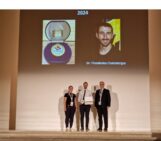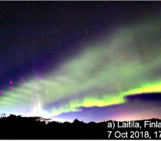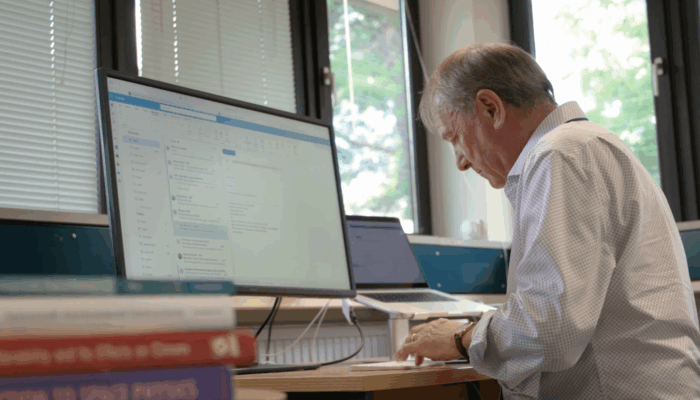
Congratulations on receiving the 2025 Julius Bartels Medal for your groundbreaking contributions to wave-particle interactions, their role in accelerating charged particles, and advancing the understanding of the formation of the radiation belts and their space weather effects. What does this recognition mean to you personally, and how does it impact your work in this fascinating field?
I am truly honoured to receive the Julius Bartels Medal, and I am very grateful for this recognition. This award represents recognition of my research on an international scale, both throughout Europe and worldwide. I also think it helps raise the importance of the radiation belts, and more generally, space weather, where the impacts on satellites and modern technology are still very uncertain, and new risks are emerging.
I also think it helps raise the importance of the radiation belts, and more generally, space weather, where the impacts on satellites and modern technology are still very uncertain, and new risks are emerging.
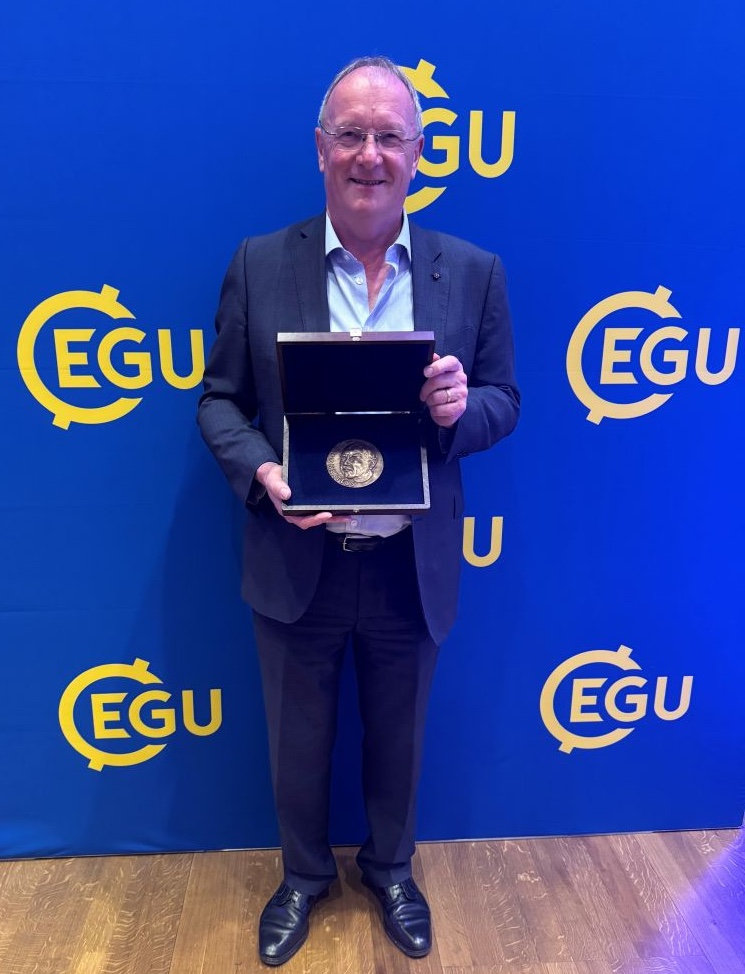
Richard Horne was awarded the Julius Bartels medal and delivered the Julius Bartels lecture at EGU 2025 in Vienna, Austria. (Credit: British Antarctic Survey)
Could you share some information about your background and what sparked your interest in your research field?
As a small boy, my father used to read short stories to me at bedtime to help me improve my reading and spelling, which were very poor. I remember him showing me an artist’s impression of a space station – this was around 1962 – and saying that one day in my lifetime, this would come true. I always remembered that. After completing my first degree, I wanted to pursue a PhD in high-energy particle physics, but I could not get a place. Instead, I was offered a position in space plasma physics at the University of Sussex, which I accepted. I am so glad I chose space plasma physics; it has turned out to be very interesting, challenging, and there are so many diverse problems to work on.
Could you tell us some of the key challenges you have encountered in your scientific career, and how have you navigated them?
My first job was at the Appleton Lab, which became the Rutherford-Appleton Lab, working on the EISCAT radar. I felt unhappy due to limited research opportunities, so I decided to leave. I joined the British Antarctic Survey (BAS) and have had a very successful research career ever since.
In about 2009-10, there was a big squeeze on BAS funding. I decided the only way forward was to win large external research grants. Leading the proposal for my first EU project (SPACECAST) was a big challenge, setting the goals, forming the consortium across Europe, getting everyone to agree on the budget, setting up a committee of Stakeholders, but we were successful. I led a second EU project (SPACESTORM) and subsequently many more grants, large and small, and co-wrote the large UK SWIMMR programme for £20 million. I realised that I was good at leading consortia and winning funding. I learnt how to lead, to set the direction, to listen to people’s views, respect their expertise, decide who would be included in the consortia and who we would compete with for EU funding, and to maintain harmony in the consortia. On one occasion, I listened to very difficult feedback from a Belgian friend and agreed to change our research plans. It was very painful, but the right decision and our consortium became much stronger as a result. My career took off because of how I responded to the initial squeeze on funding. I stepped into the unknown, and I have never looked back.
My career took off because of how I responded to the initial squeeze on funding. I stepped into the unknown, and I have never looked back.
The scientific challenges are always there. I try to identify the problem, assess whether it is important, check who wants to know, and, especially if it is an end user, what they want to know and why. I have worked on basic research in the past, but now prefer to work on a problem that has relevance to the real world, not just some underlying basic theory, and to go to the next step and show how it makes a difference to the user. The last part is often very difficult.
Your research expertise is exceptionally diverse and wide-ranging. Could you share a brief overview of the key discoveries or milestones that have shaped your career and brought you to this point?
I’ll highlight a few areas
- Wave propagation. I wrote the HOTRAY ray tracing code to study the propagation of waves in a hot magnetised plasma. I became interested in the effects of ions of the propagation of electromagnetic ion cyclotron waves, and showed how some waves are guided along the magnetic field to the ground where they are detected in Antarctica, how some are reflected and are trapped in the magnetosphere, how some can grow to large amplitudes due to density gradients, and how some can be damped and as a result heat electrons and ions. I did the same for magnetosonic waves, electron cyclotron harmonic (ECH) waves, lightning-generated whistlers, chorus, hiss and transmitter signals.
- Ion and electron heating. After learning how lab plasmas are heated by plasma waves to reach controlled fusion, I wondered whether similar processes operate naturally in space. Using HOTRAY, I showed that electrons and ions can be heated in the magnetosphere at the harmonic of the cyclotron frequency and the bi-ion resonance frequency. With Richard Thorne, we proposed wave-particle interactions as a way of heating O+, He+ and H+ during magnetic storms and showed that ion cyclotron waves could heat electrons and provide a source of energy for the red aurora.
- Electron acceleration in the radiation belts. I started to work on the radiation belts once I learnt that radial diffusion theory at the time could not explain the fast timescale for radiation belt variations. Using my previous background, I wondered whether the electrons could be accelerated by wave-particle interactions. With Richard Thorne, Nigel Meredith and Sarah Glauert, we showed that chorus plasma waves can accelerate electrons up to speeds close to the speed of light and play a major role in forming the Earth’s outer radiation belt. This is my most highly cited work, published in GRL, JGR and Nature, and changed ideas going back 40 years or so. Independent evidence of wave acceleration was published by other research Groups using data from the Van Allen Probes satellites. After some initial resistance, the importance of wave acceleration has become accepted internationally.
- Jupiter and Saturn. Working with Richard Thorne, we showed that chorus waves also accelerate electrons at Jupiter and proposed wave acceleration as the missing step in a process that begins with volcanic activity on the moon Io and ends with synchrotron radiation from Jupiter. With Emma Woodfield, we showed that wave acceleration also helps form the radiation belts at Jupiter and Saturn and is therefore a more universal process.
- Origin of the diffuse aurora. For many years, there was a debate on whether the diffuse aurora was caused by precipitation caused by ECH waves or chorus waves. After working with Richard Thorne for several years, we finally concluded that chorus waves are the dominant mechanism, due to the matching energy and due to the pitch angle distribution left behind in space. We published this in Nature.
- Forecasting the radiation belts. After showing the importance of wave acceleration and learning how satellites can be damaged by high-energy electrons, I wanted to apply our research to be more useful. That led to my EU projects, where I led the development of a system to forecast the Earth’s radiation belts up to 24 hours ahead that works automatically 24/7. We also introduced a system of risk indicators (Red, Amber, Green) that would be easy to understand for three types of orbits (GEO, MEO and Slot Region). It was also a great experience to work so closely with satellite operators and space insurance underwriters and learn about their challenges, which broadened my outlook considerably.
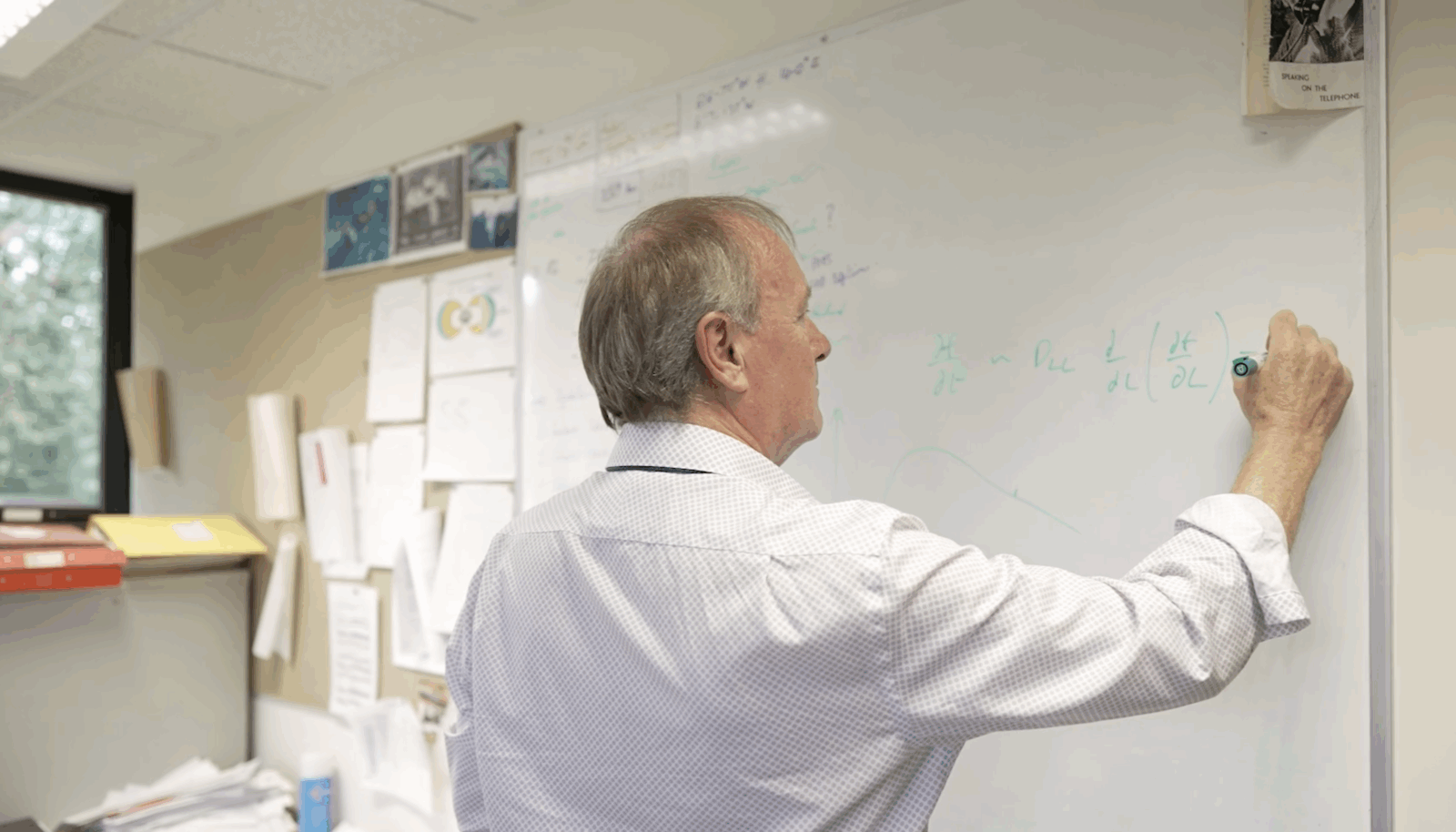
Richard Horne at the whiteboard — an essential piece of equipment for thinking through new ideas. (Credit: Natural Environment Research Council / British Antarctic Survey)
How do you foresee your research evolving over the next 3-7 years, and what key challenges or opportunities do you anticipate?
Over the next few years, I will be working with Sarah Glauert, students and postdocs to improve the physics in our BAS radiation belt model, and to improve the forecasting capability. The model forecasts are available via the European Space Agency (ESA) Space Weather portal, and the model is also being adapted for operational use by the UK Met Office. We need to improve the model for flux drop-out events and very large geomagnetic storms. This means improving the boundary conditions, our wave diffusion matrices, the variability of the plasmapause and timing of radial diffusion, amongst other processes.
I am also becoming interested in space-based solar power as a form of green energy. Some people consider the idea a fantasy. There are significant challenges, but we should approach them professionally. There is considerable uncertainty as to how much the ionosphere might disrupt the transmission of a high-power powerful microwave beam. The ionosphere will set an upper limit on the beam power, which could be a showstopper, or it could make the idea even more attractive. I am interested in resolving this question.
I am also becoming interested in space-based solar power as a form of green energy. Some people consider the idea a fantasy. There are significant challenges, but we should approach them professionally.
How do you manage the demands of your research alongside personal life and other commitments, and what strategies have you found most effective in maintaining a healthy balance?
I have always had a very supportive wife, and without doubt, I could not have been successful without Julie. Julie always took the lead in family arrangements and looked after the family when I went abroad for conferences. But once I was home, it was family time; young children simply demand time, and we were there for them. Julie and I worked it out together, but I know she did the lion’s share.
… but I know she did the lion’s share.
In your experience, what are the most pressing scientific questions in your field, which ones are likely to be solved soon, and why do you believe they hold such urgency?
- We still cannot reproduce or predict the variability of the electron radiation belts during major geomagnetic storms very well. The variability depends on so many different processes and boundary conditions for which we have incomplete data. It’s a real challenge.
- We need to improve our forecasts of space weather. For example, we need to provide a reliable forecast of when a space weather event will happen 2-3 hours ahead, its duration and severity. The current uncertainty in forecasting when an event will strike the Earth varies from plus or minus 6 to 10 hours.
- How many satellites would survive a solar energetic particle event as intense as the 1956 event? Would the new constellations of satellites in low Earth orbit be ok at high latitudes? Would there be any degradation in service, and if so, how many would be affected and for how long?
- How many satellites can be operated safely in a given altitude range during a major geomagnetic storm without initiating the Kessler syndrome?
What advice would you give to Early Career Scientists seeking to succeed in this field, and is there a particular skill or mindset you believe is crucial for success in solar-terrestrial research?
I think you are more likely to be successful when you find a problem you are really interested in. Do your research, read, learn about the problem, read again and then ideas will come to you which will give you a way forward. Make sure you understand the big picture and why the problem is important, and think about what you are going to do that is new. Are you addressing a major gap, or just filling in bits and pieces? If you cannot do all the work yourself, then collaborate, but be clear who is going to do what. Be proactive and go out and talk to other scientists to learn more – but prepare your questions first so that they know you are serious. Don’t be put off by people with titles or some great reputation; good scientists are always willing to discuss science if someone approaches them with genuine interest. Be positive, and don’t be put off when your proposal does not get funded or your paper is rejected. Learn from it instead. You must be persistent; that counts for so much. You must also learn social skills so that you can get on with people from all walks of life and get the best out of everyone. I also think you must be visible, attending meetings and giving talks and asking questions, and take an interest in other people’s work to broaden your own. Most of all, you must publish in peer-reviewed journals, making sure you have a good number of first-author papers.
I think you are more likely to be successful when you find a problem you are really interested in.

